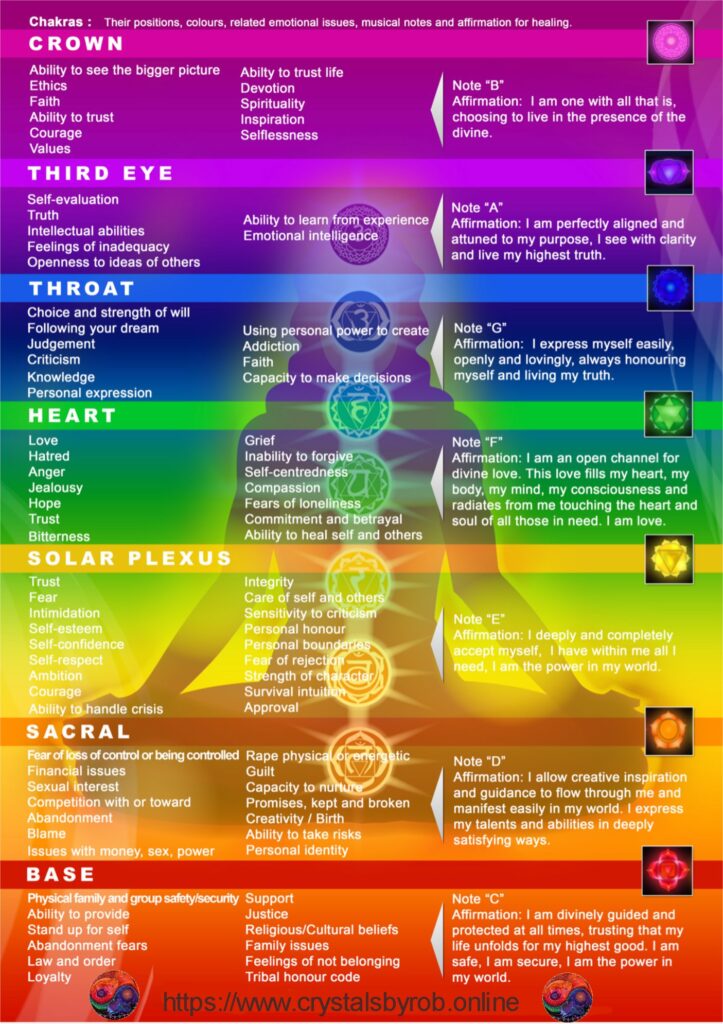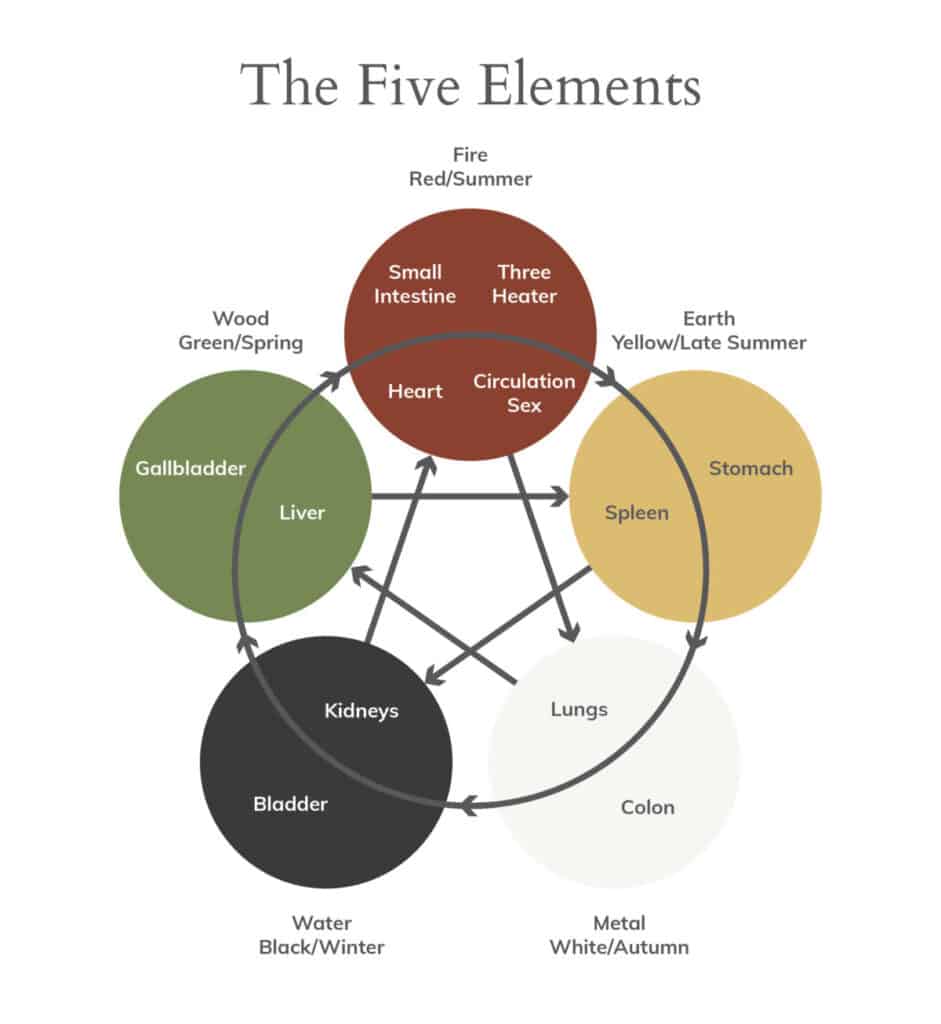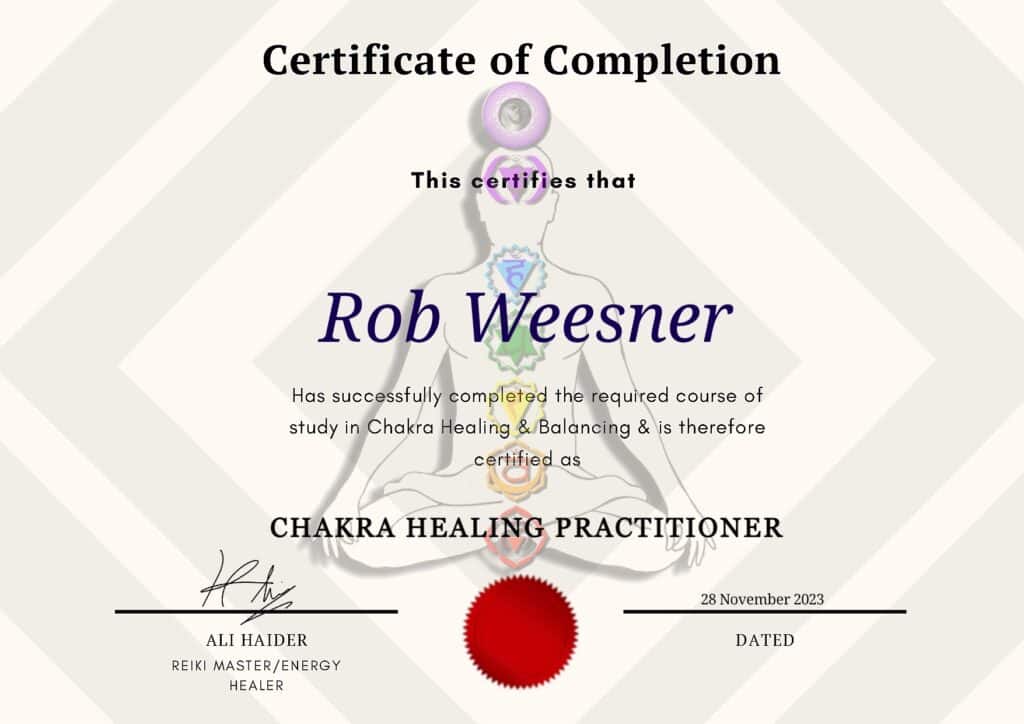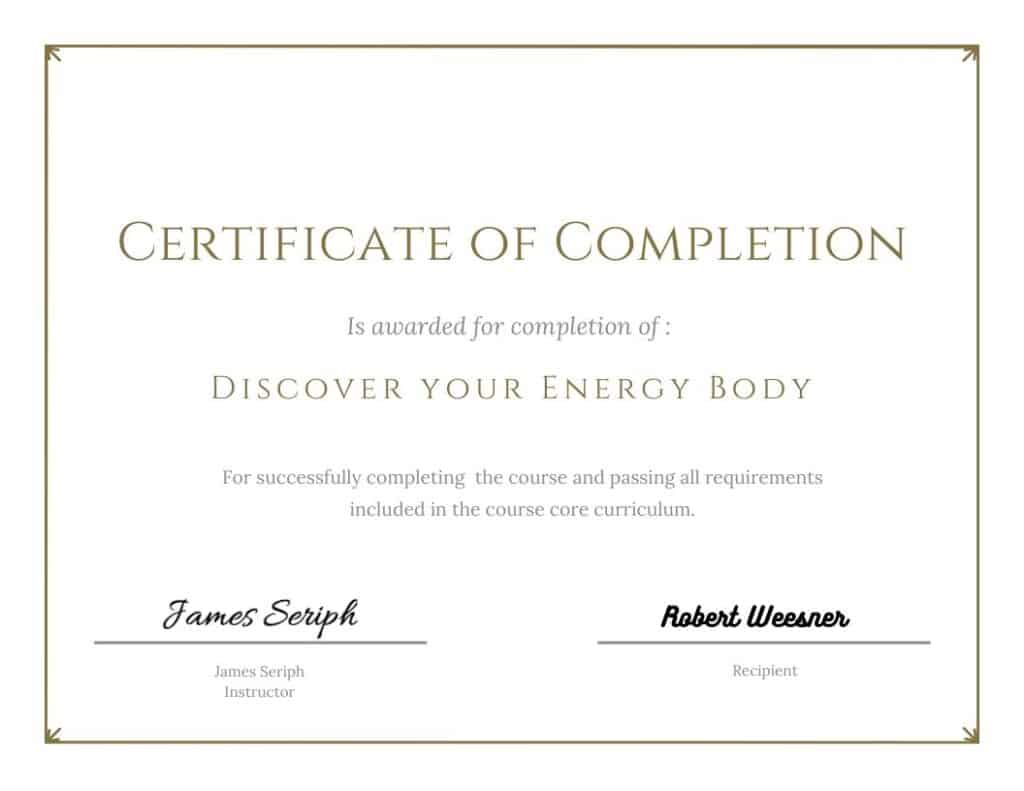Chakra Healing
Chakra Healing
Chakra Healing, The chakras are believed to be the pathways through which the life force, or prana, flows. There are seven major chakras, each associated with a different aspect of life. The first chakra, located at the base of the spine, is associated with the physical body and material possessions. The second chakra, located at the navel, is associated with emotions and relationships. The third chakra, located at the solar plexus, is associated with personal power and will. The fourth chakra, located at the heart, is associated with love and compassion. The fifth chakra, located at the throat, is associated with communication and expression. The sixth chakra, located at the brow, is associated with intuition and insight. The seventh chakra, located at the crown of the head, is associated with spiritual connection and enlightenment.
The word chakra is a Sanskrit word meaning wheel. It is a wheel-like spinning vortex that interpenetrates the physical body, with the outer ends of each vortex forming a specific layer of the auric field. The whirling circular motion forms a cavity or vacuum in the center that draws in anything it encounters on its particular vibrational level. It is then processed and returned to the auric field. The major chakras of the human body are the seven chakras that are aligned along the spinal column. Secondary chakras of importance are located in the palms of the hands, the soles of the feet, and at major joints in the arms and legs.
Chakra Healing
For the people of antiquity – Egyptians, Chinese, Hindus, Greeks, Romans, and aboriginals of many lands – the chakras were an integrated part of daily lives. As these ancient civilizations were conquered, vast libraries of knowledge were destroyed. Only a few remnants of their information on the chakra system have survived – either through the preservation of ancient texts by sacred priesthoods, or orally from generation to generation, as in the traditions of many aboriginal peoples.
In any study of the anatomy of the aura it is important to understand the significance of the chakra system. The chakras exist on all levels of the aura and serve as linking mechanisms between the auric field and the physical body as well as linking mechanisms between the different levels of the auric field itself.
It is usually believed that the three lower chakras correlate to basic primary needs – those of survival, procreation, and will – whereas the four higher chakras are concerned with our psychological makeup -defining love, communication, and knowledge, and connection with the spiritual realms.
Click Here if you would like a Chakra Healing Session
Chakra Healing
Chakras
The Seven Major Chakras
First Chakra
We must balance this chakra before moving on to the others. Otherwise our growth will be without roots, i.e., ungrounded
Other Names: Root, base, muladhara, Kundalini (Sanskrit)
Situated: base of spine and the pubic bone (but encompasses genitals and reproductive organs)
Color: red
Element: Earth
Area of consciousness: physical body
This includes all physical sensations, such as pain, sensuality, pleasure and power. Also, our survival (as an individual and as a planet), our need for world peace and environmental balance.
Key Words: stability, solidity, unity and form.
Physical organ association: gonads, also the glomus coccygeum or coccygeal body, adrenal gland, the kindeys and the spinal column
Relationship: to the solid part of the body, especially the bones Importance: location of the kundalini
Attributes: athletic, cares about survival, sensuality, pleasure and power
Governs: perception of the physical world, willpower, motivation and intent
Chakra Healing
Second Chakra
Here we encounter change, for without change we cannot grow.
Other Names: Sacral, sexual, svadhisthana (Sanskrit)
Situated: behind and just below the navel
Color: orange
Element: Water
Area of consciousness: emotional Change in that we now moving beyond our understanding of ourselves and realize the awareness of others – desire arises and with it our emotions and sexuality.
Key Words: difference, separation, change, duality, and movement
Physical organ association: spleen ( Peyer’s Patches) as well as the kidneys and bladder
Relationship: corresponds to the liquid part of the body – circulation, urinary elimination, and sexual body fluids.
Governs: feelings of sexuality, and creativity
Chakra Healing
Third Chakra
Transformation to a new state occurs through this chakra’s basic dynamic energy and our ability to find a balance between extremes.
Other Names: Solar Plexus, manipura (Sanskrit)
Situated:solar plexus, in the V formed by the ribcage, above the navel
Color: yellow
Element: Fire
Area of consciousness: mental or intellectual body This includes thoughts, opinions and judgements.
Key Words: combustion, fire, energy, action, power, and will
Physical organ association: adrenal glands, pancreas, liver, stomach, as well as the nervous system and the bladder.
Relationship: responsible for the regulation and distribution of metabolic energy throughout the body, asin digestion.
Governs: emotional issues and issues of personal power
Chakra Healing
Fourth Chakra
The task of this chakra is to integrate and balance the realms of spirit and mind with our physical body (matter).
Other Names: Heart, anahata (Sanskrit)
Situated: midway between shoulder blades (over the sternum)
Color: Green
Element: Air
Area of Consciousness: astral body This is the first level beyond 3-dimensional matter. Here we have the bridge between the dimensions of matter and the dimensions of spirit. Although we may refer to the “lower chakras” as being concerned with mankind, and the “upper chakras” as being concerned with spirituality and God, each chakra is no less important than the other. For instance, the first chakra has a number of frequencies (all within the Red vibration), ranging from very low to very high. The goal is to rise above a chakra’s lower frequencies into its higher ones.
Key Words: love, compassion, balance
Physical organ association: thymus gland (immune system), and the heart, blood, circulatory system, immune system, and the endocrine system.
Relationship: to the heart – to love as a state of being.
Governs: love, compassion, and unconditional acceptance for others
Chakra Healing
Fifth Chakra
Here we have the realm of consciousness where communication occurs, whether that be within ourselves or to and from another
Other Names: Throat, visuddha (Sanskrit)
Situated: throat area
Color: blue
Element: Sound
Area of consciousness: etheric body This etheric body is the template for the physical body, and represents our potential for perfection.
Key Words: sound, vibration, communication, and self-expression
Physical organ association: thyroid and parathyroid glands, lungs, vocal cords, and bronchial apparatus.
Relationship: the throat area where sound is created
Governs: communication, expression of thoughts and feelings
Chakra Healing
Sixth Chakra
The essence and function of this chakra is to “see” in the sense that we accept that complete vision will include both darkness and light.
Other Names: Third Eye, Brow, ajna (Sanskrit)
Situated: centre of head, behind forehead
Color: indigo
Element: Light
Area of consciousness: celestial body It is here that we have “sixth sight”, or the ability to “see” by way of clairvoyance. We use this chakra for visualization, receiving insight or inspiration.
Key Words: intuition, imagination and clairvoyance
Physical organ association: pineal (although some believe it is the pituitary gland) Relationship: the storehouse and viewing screen of all visual input from our two physical eyes and our “third eye” (the etheric organ of psychic perception).
Governs: spirituality and the search for meaning in life, intuition, visualization
Seventh Chakra
This chakra represents our belief systems, both conscious and unconscious.
Other Names: Crown, sahasrara (Sanskrit)
Situated:top of head
Color: white (some believe violet)
Element: Thought
Area of Consciousness: ketheric body. This chakra is associated with the spiritual realm. Here is where we merge with God, the All That Is.
Key Words: enlightenment, knowing and cosmic consciousness
Physical organ association: pituitary gland (although some believe it is the pineal gland)
Relationship: not of the material world but as a gateway to worlds beyond
Governs: our connection to the concept of “God” or a higher intelligence
Click Here if you would like a Chakra Healing Session

Click Here if you would like a Chakra Healing Session
The Meridians
What is Qi?
Qi energy provides your body with life. We have many types of qi—two examples are inherited qi and gong qi. According to chiropractor and acupuncturist Dr. David Trybus, “Inherited qi is the energy you are born with, and gong qi is your daily energy stock. Once you deplete your gong qi, your body begins to pull energy from the inherited qi stock to make up for it, and this provides the groundwork for aging.” As your body burns through its inherited qi, you begin to experience graying, arthritic changes such as muscle or joint stiffness, and other telltale signs of aging.
Similarly, this vital energy is responsible for keeping you healthy. Having a reliable, strong flow of qi through your body is the foundation for well-being, and conversely, disruption of this flow—when qi becomes blocked—can contribute to ill-being. “Toxic environments, overworking, and stress, among other things, can all contribute to an imbalance in your qi,” says Dr. Liu.
The Meridian System
So how does this circulatory system of energy actually work? Your body has twelve main meridians, or energetic passageways, that pass through the top layer of skin and fascia and through which your qi flows. Think of twelve different extension cords plugged in end to end and intertwined. If you were to unravel them, they would form one big circle. Thus, they are all connected.
Ten of these twelve meridians are associated with a specific organ: the heart, lung, stomach, kidney, large intestine, small intestine, liver, bladder, gallbladder, and spleen are each represented by a meridian. The remaining two are the pericardium meridian, which is linked to emotional and spiritual well-being, and the triple-warmer meridian, which controls metabolism.

Think about this: if you are over-stressed or too high-energy, your yang organs are most likely overworking and dominating your yin organs, or vice versa. This is one reason why maintaining a balance between the yin and yang organs by controlling the energy flow through your body’s meridians is so important to your health.
“Every yin organ is paired up with a yang organ, and the two organs within each pair have opposite functions that balance one another out—yin organs calm things down, while yang organs stimulate,” says Dr. Trybus. The five organ pairs, as shown in the chart, are each governed by an element (wood, fire, earth, metal, and water). Your constitution is made up of these five elements, and the different elements have attributes that provide guidelines for treating and diagnosing issues with their corresponding organs through their meridians.
While all five elements coexist within each person, you have one that is your dominant element, which is mostly dependent upon your character traits, habits, and health patterns. Your dominant element loosely governs your persona as well as the best ways to go about tending to any energetic imbalances in your body. If your dominant element is Metal, for example, it is important for you to keep your lungs and large intestine healthy and energized above all others because those are the organs associated with that element and are considered your “baseline” of overall health. Each element has its own set of attributes, healing methods, helpful yoga poses, nourishing foods, and more that are uniquely attuned to its common ailments and what it needs to thrive.
Because they are all connected, you have to keep each meridian energized in order to keep the others energized as well and maintain a balance in your body. A blockage in a meridian (like unplugging two of the extension cords in the circuit) causes an interruption in the flow of energy. The qi may then find a way to reroute itself through other meridians, but this will lead to a buildup of energy on one side of the blockage and a deficiency of energy on the other.
Such an energy imbalance directly relates to health issues. For example, if you have a problem with your small intestine, your small intestine meridian is likely drained of energy (creating a blockage) and forcing the other meridians to overcompensate, resulting in an energetic yin/yang imbalance that will lead to further symptoms.
The meridians are also the way that your muscles get their energy. Each meridian organ corresponds to a muscle group—for example, the kidney is associated with the lower back muscles, and the small intestine is associated with the quadriceps and abdominal muscles. So, if you experience core weakness or trouble climbing stairs due to leg weakness, that could be a signal that something isn’t right with your small intestine and that the corresponding meridian could be low on energy.
Uncovering the 12 Meridians

The Heart Meridian
The “King of the Organs,” the heart is the house of the vital essence. It commands all of the other organs and emotions. The heart is also seen as the seat of the mind. It works with many organs to regulate circulation and maintain a healthy mental state. If the heart is imbalanced, all the other organs and meridians will suffer. It is also seen as primary in the defense against disease.
The tongue is used in diagnosing heart imbalances. Speech impediments or being mute is considered to have been caused by an imbalance in the heart meridian. As a source of bodily heat and circulation of the blood, a pallid facial complexion can also diagnose heart meridian imbalances.
All manner of mental and emotional issues can also occur from an imbalance of the heart meridian.
The heart meridian begins near the armpit and runs down the lower inner arm before ending at the tip of the little finger.
Element: Fire
Direction: South
Season: Summer
Climate: Heat
Cultivation: Growth
Sense Organ: Tongue
Sense: Touch
Tissue: Vessels
Positive Emotion: Joy
Negative Emotion: Arrogance
Flavor: Bitter
Color: Red
Sound: Laughter
Smell: Scorched
Time: 11 a.m. – 1 p.m.
Opposite: Gall Bladder
Yin/Yang: Yin
Flow Direction: Up
Origin/Ending: Chest to Hand
Number of Acupoints: 9
The Lung Meridian
The lung meridian is second only to the heart meridian among the 12 Principal Meridians. It is called the “Prime Minister” and assists with controlling energy and circulating the blood. The lungs and the heart are seen to work in conjunction with blood and energy, being complementary parts of the living system. This connection has led the lungs to also be called “The Priest” and the “Minister of Heaven.” The lungs also control the skin and perspiration.
This meridian generates what is known as the radiant energy. This control puts the lungs in the front line for fighting external disease. The lungs also connect the mind to the body through breathing. Qigong is designed to strengthen this bond and focuses on the lung meridian.
Imbalances in the lung meridian can cause upper respiratory infection, breathing dysfunction, and skin problems. An imbalance can also cause despair and anxiety.
The lung meridian begins at the front of the shoulder. It notches up before running down the top of the inner arm and ending at the corner of the thumbnail.
Element: Metal
Direction: West
Season: Autumn
Climate: Dry
Cultivation: Reaping
Sense Organ: Nose
Sense: Smell
Tissue: Skin and Hair
Positive Emotion: Courage
Negative Emotion: Grief
Flavor: Pungent (Umami)
Color: White
Sound: Crying
Smell: Rotten
Time: 3 a.m. – 5 a.m.
Opposite: Bladder
Yin/Yang: Yin
Flow Direction: Up
Origin/Ending: Chest to Hand
Number of Acupoints: 11
The Stomach Meridian
The stomach is in charge of elemental balance. Called the “Sea of Nourishment” and the “Minister of the Mill,” it is the start of digestion. Because of the umbilical cord, it is also called the “Root of Postnatal Life.” The stomach is tasked with extracting the energy from food and beverages.
Working with the spleen, the stomach transports the energy throughout the Meridian System. The stomach also uses the different types of food eaten to balance the five elemental energies.
An imbalance with the stomach meridian will cause energetic deficiencies across the Meridian System. It can also cause mania, confusion, or anxiety.
The stomach meridian begins under the eye, next to the nose. It descends before following the jawline up to the skull. It then drops and flows down the throat, chest, and abdomen. Continuing, it runs down the front of the legs and feet before ending at the big toe’s outside edge.
Element: Earth
Direction: Center
Season: Late Summer
Climate: Damp
Cultivation: Transforming
Sense Organ: Mouth
Sense: Taste
Tissue: Muscles
Positive Emotion: Compassion
Negative Emotion: Anxiety
Flavor: Sweet
Color: Yellow
Sound: Singing
Smell: Fragrant
Time: 7 a.m. – 9 a.m.
Opposite: Pericardium
Yin/Yang: Yang
Flow Direction: Down
Origin/Ending: Face to Foot
Number of Acupoints: 45
The Kidney Meridian
In TCM, the kidney is seen as one of the most important organs. This organ includes the adrenal glands and the sex glands of men and women. It is known as the “Minister of Power” as well as the “Root of Life.” It is tasked with storing the prenatal energy as well as the essential vital energy for life. The kidney also works at regulating the brain and plays an important role in the formation of memories and rationality.
An imbalance in the kidneys can cause impotency or an immune deficiency. It can also lead to a poor memory or an inability to think clearly. Diagnosis of kidney meridian imbalances are done by examining the eyes and hearing. Back pain and a short attention span also indicated a kidney meridian imbalance.
The kidney meridian starts at the sole of the foot and runs along the inner edge before looping around the ankle. It ascends the inner leg and runs up the central torso before ending at the inner collarbone.
Element: Water
Direction: North
Season: Winter
Climate: Cold
Cultivation: Hibernate
Sense Organ: Ears
Sense: Hearing
Tissue: Bones
Positive Emotion: Gentleness
Negative Emotion: Fear
Flavor: Salty
Color: Black
Sound: Groaning
Smell: Putrid
Time: 7 p.m. – 9 p.m.
Opposite: Large Intestine
Yin/Yang: Yin
Flow Direction: Up
Origin/Ending: Foot to Chest
Number of Acupoints: 27
The Large Intestine Meridian
The large intestine is in charge of making solid waste from liquid. Known as the “Master of Transportation,” it is the final organ before solid waste is eliminated. The large intestine works closer with its paired organ than most. The lungs move the large intestine by breathing. The large intestine balances the body’s fluids and works with the lungs in perspiration.
An imbalance in the large intestine meridian can cause constipation, diarrhea, and abdominal pain. Depression and excessive worry can also be caused by an imbalance of this meridian.
The large intestine meridian starts at the outside of the index fingernail. It travels up the top of the arm before crossing to the back of the shoulder. It crosses back over the shoulder, runs up the throat, and ends just below the nose.
Element: Metal
Direction: West
Season: Autumn
Climate: Dry
Cultivation: Reaping
Sense Organ: Nose
Sense: Smell
Tissue: Skin and Hair
Positive Emotion: Courage
Negative Emotion: Grief
Flavor: Pungent (Umami)
Color: Off-White
Sound: Crying
Smell: Rotten
Time: 5 a.m. – 7 a.m.
Opposite: Kidney
Yin/Yang: Yang
Flow Direction: Down
Origin/Ending: Hand to Face
Number of Acupoints: 20
The Small Intestine Meridian
Responsible for receiving food during the digestion process, the small intestine are known as the “Minister of Reception.” It separates impurities from the food before passing the waste on and also absorbs water.
It should come as no surprise that the small intestine meridian is responsible for digestion. But, this meridian also works with the heart meridian.
It controls the basic emotions and the Chinese equivalent of “a broken heart” is “broken intestines.” The meridian also works with the pituitary gland, also known as the “master gland,” to regulate growth and the endocrine system.
Imbalance in the small intestine meridian can cause emaciation and pain in the abdomen. It can also lead to poor reasoning ability and restlessness.
Starting at the tip of the little finger, the small intestine meridian runs up the lower back of the arm. It zig-zags at the back of the shoulder before ascending up the side of the neck. At the cheek it moves outward ending at the front of the ear.
Element: Fire
Direction: South
Season: Summer
Climate: Heat
Cultivation: Growth
Sense Organ: Tongue
Sense: Touch
Tissue: Vessels
Positive Emotion: Joy
Negative Emotion: Arrogance
Flavor: Bitter
Color: Pink Red
Sound: Laughter
Smell: Scorched
Time: 1 p.m. – 3 p.m.
Opposite: Liver
Yin/Yang: Yang
Flow Direction: Down
Origin/Ending: Hand to Face
Number of Acupoints: 19
The Liver Meridian
The liver is considered one of the primary organs in TCM. It is called the “Chief of Staff” of the “General”.
This is in part because the liver transforms nutrients into usable substances that the body uses for energy. The liver is also called this because it detoxifies the blood.
The liver meridian is in charge of the peripheral nervous system as well as the ligaments and tendons. Hypertension and the inability to relax are caused by an imbalance in the liver meridian. Liver imbalances are diagnosed by examining the eyes or fingernails and toenails. Imbalance of this meridian can also cause anger issues.
The liver meridian originates at the inside of the big toe. It runs along the instep of the foot and up the inner leg. At the hip, it dips toward the genitals before ascending. At the lower abdomen, the liver meridian zags out and up to the ribs before moving back to the center and ascending to its end point at the nipple.
Element: Wood
Direction: East
Season: Spring
Climate: Windy
Cultivation: Germinate
Sense Organ: Eyes
Sense: Sight
Tissue: Tendons
Positive Emotion: Kindness
Negative Emotion: Anger
Flavor: Sour
Color: Deep Green
Sound: Shouting
Smell: Scorched
Time: 1 a.m. – 3 a.m.
Opposite: Small Intestine
Yin/Yang: Yin
Flow Direction: Up
Origin/Ending: Foot to Chest
Number of Acupoints: 14
The Bladder Meridian
The bladder is referred to as the “Minister of the Reservoir.” While the organ only stores and eliminates liquid waste, the energetic function involves balancing the autonomous nervous system. This is in part because the bladder meridian spans the height of the body and runs alongside the spinal column. The bladder plays a role in regulating the sympathetic and parasympathetic responses.
An imbalance of the bladder meridian can cause lower back pain or lower back weakness as well as urinary problems. A bladder meridian imbalance can also cause one to be fearful or stubborn.
The bladder meridian begins at the inner eye and runs up the skull where is works outwards before running down the back. The meridian then follows the hip and sacral nerves before running down the back of the leg and ends outside of the baby toe.
Element: Water
Direction: North
Season: Winter
Climate: Cold
Cultivation: Hibernate
Sense Organ: Ears
Sense: Hearing
Tissue: Bones
Positive Emotion: Gentleness
Negative Emotion: Fear
Flavor: Salty
Color: Deep Black
Sound: Groaning
Smell: Putrid
Time: 3 p.m. – 5 p.m.
Opposite: Lung
Yin/Yang: Yang
Flow Direction: Down
Origin/Ending: Face to Foot
Number of Acupoints: 67
The Gallbladder Meridian
The gallbladder meridian can be seen almost as the body’s janitor. This is not an insult as the ancient Chinese called it the “Honorable Minister.” The gallbladder secretes bile to aid in digestion for muscular energy and works with the lymphatic system to clear out lactic acid. It follows that the gallbladder meridian is in part responsible for muscular health.
The gallbladder meridian is responsible for daring and decisive mental states. The aphorism “a lot of gall,” reflects this belief even in ancient Western cultures.
An imbalance in the gallbladder meridian generates more mental afflictions than physical. Such an imbalance to lead to insomnia and stiffness of the muscles. It can also cause poor judgment, timidity, and indecision.
The gallbladder meridian begins on the outer corner of the eye. It zig-zags up and down above the ear and over the eye before running down the back of the skull. It descends down the side of the body, continuing down the outside of the leg, and ends on the outer edge of the 4th toe.
Element: Wood
Direction: East
Season: Spring
Climate: Windy
Cultivation: Germinate
Sense Organ: Eyes
Sense: Sight
Tissue: Tendons
Positive Emotion: Kindness
Negative Emotion: Anger
Flavor: Sour
Color: Yellow Green
Sound: Shouting
Smell: Scorched
Time: 11 p.m. -1 a.m.
Opposite: Heart
Yin/Yang: Yang
Flow Direction: Down
Origin/Ending: Face to Foot
Number of Acupoints: 44
The Spleen Meridian
This meridian includes the pancreas and is in part responsible for digestion. The spleen meridian is referred to as the “Minister of the Granary.” Nutrients from food and beverages are extracted by enzymes produced in the spleen and pancreas. The meridian regulates the quantity and the quality of blood in circulation.
The spleen meridian works with the lung meridian to generate True Human Energy. This meridian is affected by the tone of muscles and affects them in turn. The spleen meridian is responsible for logical and analytical thinking. It is also the first meridian in memory formation.
Imbalances in the spleen meridian can be diagnosed from the mouth. Red, moist lips indicate an excess of splenetic energy while pale, dry lips indicate the opposite. A bad temper and moodiness are associated with splenetic imbalances.
The spleen meridian begins at the tip of the big toe and travels up the inside of the leg. It moves in and out the stomach until it travels up the side of the body and ends underneath the front of the shoulder.
Element: Earth
Direction: Center
Season: Late Summer
Climate: Damp
Cultivation: Transforming
Sense Organ: Mouth
Sense: Taste
Tissue: Muscles
Positive Emotion: Compassion
Negative Emotion: Anxiety
Flavor: Sweet
Color: Yellow
Sound: Singing
Smell: Fragrant
Time: 9 a.m. – 11 a.m.
Opposite: Triple Warmer
Yin/Yang: Yin
Flow Direction: Up
Origin/Ending: Foot to Chest
Number of Acupoints: 21
The Pericardium Meridian
While not an organ, the pericardium corresponds to an actual part of the body. The pericardium is a protective sack encircling the heart. It also assists the triple-heart warmer with its functions. It is one of the two principal meridians not associated with a major organ. Its protection extends beyond the physical to include the mental, emotional, and spiritual.
It is also responsible for regulating circulation of the blood. The pericardium meridian also links the emotional feelings of love with the physical act of sex.
Imbalances can cause problems with the heart, chest, stomach, and mind. Imbalances with the pericardium meridian are often caused by extreme, sustained outbursts of emotion.
This meridian begins in the middle of the chest and descends to the diaphragm. It also branches out from the chest and runs along the interior of the arm, ending at the tip of the middle fingernail.
Element: Fire
Direction: South
Season: Summer
Climate: Heat
Cultivation: Growth
Sense Organ: Tongue
Sense: Touch
Tissue: Vessels
Positive Emotion: Joy
Negative Emotion: Arrogance
Flavor: Bitter
Color: Purple Red
Sound: Laughter
Smell: Scorched
Time: 7 p.m. – 9 p.m.
Opposite: Stomach
Yin/Yang: Yin
Flow Direction: Up
Origin/Ending: Chest to Hand
Number of Acupoints: 9
The Triple-Warmer Meridian
The Triple-Warmer or Triple-Burner Meridian is the second primary meridian not associated with an organ. Still, it is similar to the thyroid in that it controls the metabolism. It is not strictly limited to the energetic metabolism, though. It is also involved in digestion and waste processing.
As the name suggests, there are three parts to the triple warmer: the upper, middle, and lower. The upper warmer runs from the base of the tongue to the stomach. It controls bodily intake of food, water, and oxygen. The middle burner starts at the stomach and ends at the pyloric valve. It is responsible for digestion and transformation for use by the body. The lower burner then splits, ending at the anus and urinary tract. It handles the elimination of wastes.
When out of balance, disorders with the sense organs and side of the head can occur.
The triple-warmer’s meridian begins at the tip of the ring finger. It runs up the back of the arm and crosses the trapezius, ending at the collarbone.
Element: Fire
Direction: South
Season: Summer
Climate: Heat
Cultivation: Growth
Sense Organ: Tongue
Sense: Touch
Tissue: Vessels
Positive Emotion: Joy
Negative Emotion: Arrogance
Flavor: Bitter
Color: Orange Red
Sound: Laughter
Smell: Scorched
Time: 9 p.m. – 11 p.m.
Opposite: Spleen
Yin/Yang: Yang
Flow Direction: Down
Origin/Ending: Hand to Face
Number of Acupoints: 23
Governing Vessel
Though not one of the 12 Principal Meridians, the governing vessel is often reflexed in acupuncture. Called “The Sea of Yang Meridians,” the governing vessel controls the yang meridians. It also controls the Guardian Qi, and both are associated with the immune system and the ability to fight off external disease. It is also said to be the “fire” of the body and responsible for body heat.
The governing vessel also works with the kidneys to regulate the brain. Along with the conception vessel, it is one of the two most important meridians in TCM.
The governing vessel begins at the base of the pelvis and travels up the back, over the top of the head to right above the upper lip.
The governing vessel has 28 acupoints.
Conception Vessel
Much like the governing vessel, the conception vessel is not one of the 12 principal meridians. Also like the governing vessel, the conception vessel is manipulated often in acupuncture. It is also known as the “Sea of Yin Meridians.” It receives the Qi from the yin meridians before distributing it to the yang meridians. The conception vessel is responsible for circulating Qi throughout the body. It also controls the reproductive cycle and libido.
The conception vessel helps control the 7 year life cycle. It also generates the Guardian Qi that the governing vessel controls. It is one of the two most important meridians in TCM and is the first to be trained.
The conception vessel begins at the base of the pelvis and travels up the front of the body to the lower lip. It is one of the primary meridians in the TCM practice of Qigong.
The conception vessel has 24 acupoints.
Acupuncture in Modern Healthcare
Acupuncture is a complex and nuanced form of alternative healthcare. Even though it was developed thousands of years ago, it is still practiced today.
It is based on the Meridian System, and manipulates specific points on the body to achieve its desired effect. This system is sophisticated but relies on unproven theoretical systems.
However, advances in modern, scientific research has shed new light on its benefits and limitations.
You should educate yourself before seeking acupuncture treatment. This is especially important when choosing an acupuncturist. Make sure your practitioner is certified from an accredited institution and licensed.
Click Here if you would like a Chakra Healing Session







Click Here if you would like a Chakra Healing Session
Chakra Healing Workbook – Planner
Angel Tuning Forks Sound Healing Session
Aura Balancing Crystal Grid Distant Healing
Chakra Crystal Grid Distant Healing
Recent Blog Posts
- (no title)
- How To Use Crystal Balls For Healing
- How To Use Quartz Crystals For Healing
- Metaphysical Healing Properties Of Clear Elestial Quartz
- Metaphysical Healing Properties Of Shangaan Amethyst
- Metaphysical Healing Properties Of Picasso Jasper
- Metaphysical Healing Properties Of Earth Goddess Shaped Crystals
- Metaphysical Healing Properties Of Candle Quartz With Lithium
- Metaphysical Healing Properties of Mexican Crazy Lace Agate
- Metaphysical Healing Properties Of Moon Shaped Crystals
- Metaphysical Healing Properties Of Amethyst With Crazy Lace Agate
- Metaphysical Healing Properties Of Crystal Slabs
Blog Categories
- Aura
- Books
- Chakras
- Creating Intention Bowls
- Crystal – Programming, Cleansing, Chakra Info
- Crystal Grids
- Crystal Witchcraft
- Crystals And Angels
- Crystals Related To Deity Spirit Guides
- Elements
- Feng Shui
- Geological Properties Of Crystals
- History Of Crystals
- Incense – The History Of, How To Make, And Incense Recipes
- Manifesting
- Meridians
- Metaphysical Healing Properties Of Crystals By Color
- Metaphysical Properties Of Crystals And Stones
- Podcasts
- Properties Of The Shapes Of Stones
- Q & A
- Reiki Articles
- Rituals
- Sacred Geometry
- Sacred Space
- Sound Healing
- Stones For Ailments
- Top Stones Lists
- Uncategorized
- Uses Of Crystals In Religion
- Video Blogs
- Actinolite33 products
- Agate104104 products
- Ajoite33 products
- Alantisite11 product
- Amazonite11 product
- Amber55 products
- Amegreen11 product
- Amethyst8181 products
- Amethyst Agate33 products
- Amethyst Stalactite22 products
- Ammonite Necklaces11 product
- Amphibole In Quartz2323 products
- Angel Aura Quartz44 products
- Angel Phantom Quartz55 products
- Angel Tuning Forks Sound Healing Session11 product
- Angelic Crystal Energy Attunements1919 products
- Angelite11 product
- Apache Tears11 product
- Apatite11 product
- Apatite In Albite33 products
- Apophyllite44 products
- Apophyllite With Stilbite33 products
- Apple Green Aura Quartz11 product
- Aqua Aura Quartz11 product
- Aquamarine33 products
- Aragonite44 products
- Arcturian Healing Modalities33 products
- Arcturian Reiki Attunement22 products
- Arkansas Quartz1010 products
- Aura Balancing Distant Healing11 product
- Aura Quartz Crystals66 products
- Auralite44 products
- Aventurine44 products
- Banded Black Agate99 products
- Banded Obsidian11 product
- Beads88 products
- Black Tourmaline88 products
- Bloodstone11 product
- Blue Lace Agate33 products
- Blue Quartz11 product
- Blueberry Quartz33 products
- Books On Crystals1515 products
- Botswana Agate33 products
- Bowls66 products
- Cabochons1919 products
- Calcite2020 products
- Candle Quartz99 products
- Carnelian1818 products
- Carved Penis Crystals11 product
- Celestite33 products
- Chakra55 products
- Chakra Grids11 product
- Chalcedony55 products
- Champagne Quartz22 products
- Charoite11 product
- Chiastolite66 products
- Chlorite99 products
- Chlorite Lemurian Crystals77 products
- Chrysocolla33 products
- Citrine1212 products
- Clam Shell Jasper44 products
- Clear Lemurian Crystals66 products
- Clear Quartz2121 products
- Cobra Jasper11 product
- Coffins33 products
- Coprolite22 products
- Coral11 product
- Crystal Balls / Spheres130130 products
- Crystal Eggs3232 products
- Crystal Grid Distant Healing22 products
- Crystal Healing Course11 product
- Crystal Notes11 product
- Crystal Reiki Session11 product
- Cut And Polished6060 products
- Danburite22 products
- Dendritic Agate1616 products
- Dendritic Opal11 product
- Dendritic Quartz22 products
- Desert Rose22 products
- Diamantina Quartz Crystals44 products
- Diaspore11 product
- Dragi Jade11 product
- Dragons Blood Jasper44 products
- Dravite22 products
- Druzy Quartz66 products
- Dumortierite11 product
- Earth Goddess Crystals44 products
- Elestial Quartz Crystals55 products
- Energetic Protection From Negative Energy Session11 product
- Energy Healing11 product
- Epidote In Prehnite44 products
- Euchlorite88 products
- Fenster Quartz22 products
- Fire Amphibole66 products
- Flames66 products
- Flower Agate77 products
- Fluorite4040 products
- Freeforms3131 products
- Garnet22 products
- Garnet In Schist11 product
- Geodes1717 products
- Girasol11 product
- Golden Healer3434 products
- Grape Agate22 products
- Green Chert11 product
- Green Opal22 products
- Halite11 product
- Hearts4747 products
- Hematite77 products
- Hematite included Amethyst1111 products
- Hickoryite22 products
- Honey Calcite33 products
- Included Quartz2121 products
- Included Quartz Free Form Prisms99 products
- Indigo Gabbro44 products
- Intention Bowls44 products
- Ironstone11 product
- Jade99 products
- Jasper3434 products
- Kammererite11 product
- Kiwi Calcite11 product
- Krystic Arcturian Chakra Unification Attunement11 product
- Kunzite11 product
- Labradorite55 products
- Lake Superior Agate44 products
- Lapis Lazuli22 products
- Larvikite11 product
- Laser Wand Crystals33 products
- Lemon Quartz11 product
- Lemurian Quartz Crystals3535 products
- Lepidolite33 products
- Lithium Quartz Crystals1010 products
- Lodolite Quartz Crystals88 products
- Love Bowls11 product
- Malachite11 product
- Manganese Included Quartz44 products
- Message Wands1313 products
- Mini Spheres2121 products
- Montana Agate22 products
- Mookaite11 product
- Moon Ritual Bowls11 product
- Moon Shaped Crystals1212 products
- Moonstone44 products
- Moroccan Agate33 products
- Moss Agate1515 products
- Mushrooms33 products
- Mystic Merlinite44 products
- Necklaces3333 products
- Nirvana Quartz11 product
- Obsidian1111 products
- Ocean Jasper55 products
- Opal99 products
- Opalite22 products
- Orca Agate1111 products
- Orthoceras44 products
- Palm Wood33 products
- Panther Jasper11 product
- Peach Quartz55 products
- Pecos Diamonds33 products
- Pendulum Reading11 product
- Pendulums66 products
- Petrified Wood55 products
- Phantom Quartz33 products
- Phoenix Stone44 products
- Pietersite11 product
- Pineapple Quartz11 product
- Pink Amethyst22 products
- Pink Lemurian99 products
- Pink Thulite & Scapolite22 products
- Prasem33 products
- Prehnite33 products
- Quantum Quattro Silica11 product
- Quartz Crystal Clusters1313 products
- Quartz Crystal Points106106 products
- Rabbit Hair Quartz44 products
- Rain Forest Jasper55 products
- Rainbow Obsidian44 products
- Red Hematoid Quartz Crystals2828 products
- Red Plum Blossom Jade66 products
- Red Tanzurine Quartz44 products
- Removing Negative Energies Bowl11 product
- Rhodonite55 products
- Riebeckite In Quartz11 product
- Root Beer Calcite22 products
- Rose Quartz1212 products
- Ruby88 products
- Ruby And Tourmaline In Quartz11 product
- Ruby In Fuchsite11 product
- Ruby In Kyanite33 products
- Ruby In Zoisite22 products
- Rutilated Quartz33 products
- Sardonyx22 products
- Selenite1313 products
- Septarian1111 products
- Serpentine66 products
- Shiva Lingam11 product
- Shungite33 products
- Singing Quartz Crystals11 product
- Skulls55 products
- Smoky Lemurian Crystals2020 products
- Smoky Quartz Cluster22 products
- Smoky Quartz Crystals3333 products
- Snowflake Obsidian11 product
- Solar Eclipse Bowl11 product
- Spectrolite11 product
- Spessartite Garnet On Smokey Quartz11 product
- Spirit Quartz3737 products
- Starbrary Crystals55 products
- Strawberry Quartz Crystals11 product
- Stromatolite22 products
- Subscription Service11 product
- Sunstone22 products
- Super Seven44 products
- Tangerine Quartz44 products
- Tarot Cards11 product
- Teardrop99 products
- Tianshan Blue55 products
- Tibetan Quartz99 products
- Tiffany Stone3131 products
- Tigers Eye22 products
- Tourmaline44 products
- Tourmaline In Albite2020 products
- Tourmaline In Quartz99 products
- Towers7575 products
- Trapiche Amethyst With Chevron99 products
- Tremolite22 products
- Trolleite33 products
- Tumbled Stone Necklaces1010 products
- Tumbled Stones124124 products
- Unakite33 products
- Utah Mineral Flats66 products
- Utah Topaz Crystals11 product
- Variscite22 products
- Vesuvianite11 product
- Volcano Agate22 products
- Wollastonite11 product
- Yavapai33 products
- Yellow Hematoid Quartz2626 products
- Yellow Quartz22 products
- Yellow Skin Agate55 products
- Youngite11 product
